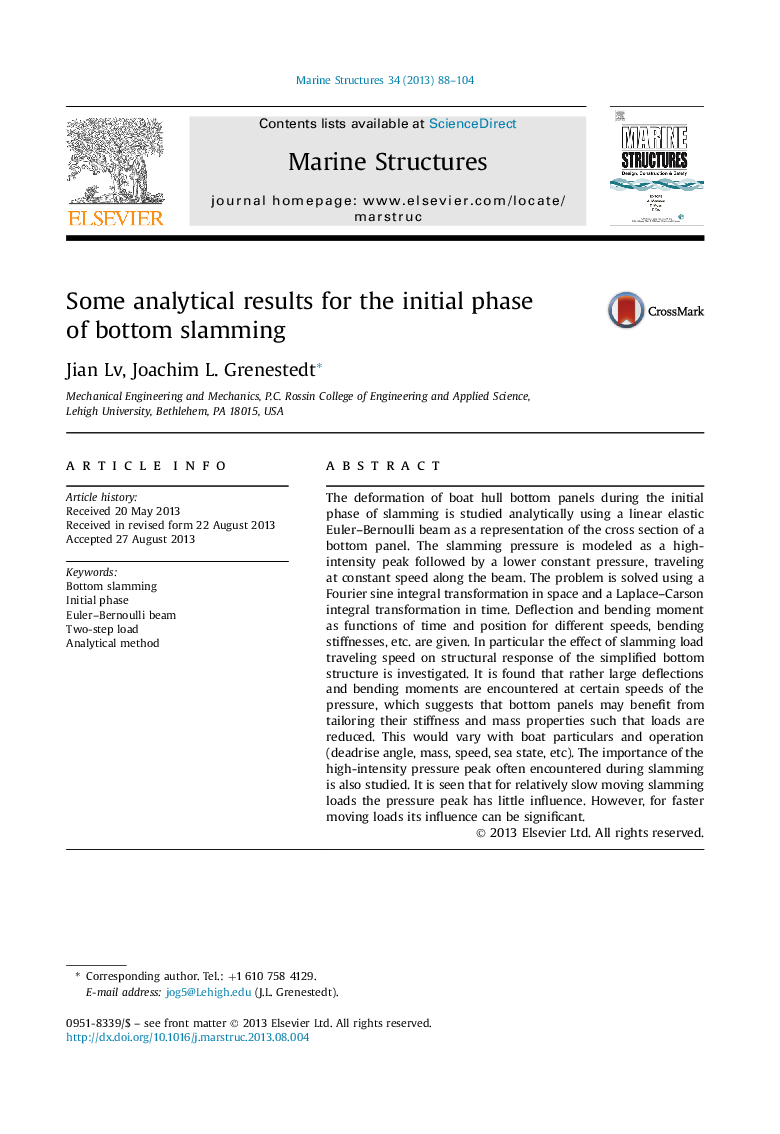| Article ID | Journal | Published Year | Pages | File Type |
|---|---|---|---|---|
| 294418 | Marine Structures | 2013 | 17 Pages |
The deformation of boat hull bottom panels during the initial phase of slamming is studied analytically using a linear elastic Euler–Bernoulli beam as a representation of the cross section of a bottom panel. The slamming pressure is modeled as a high-intensity peak followed by a lower constant pressure, traveling at constant speed along the beam. The problem is solved using a Fourier sine integral transformation in space and a Laplace–Carson integral transformation in time. Deflection and bending moment as functions of time and position for different speeds, bending stiffnesses, etc. are given. In particular the effect of slamming load traveling speed on structural response of the simplified bottom structure is investigated. It is found that rather large deflections and bending moments are encountered at certain speeds of the pressure, which suggests that bottom panels may benefit from tailoring their stiffness and mass properties such that loads are reduced. This would vary with boat particulars and operation (deadrise angle, mass, speed, sea state, etc). The importance of the high-intensity pressure peak often encountered during slamming is also studied. It is seen that for relatively slow moving slamming loads the pressure peak has little influence. However, for faster moving loads its influence can be significant.
